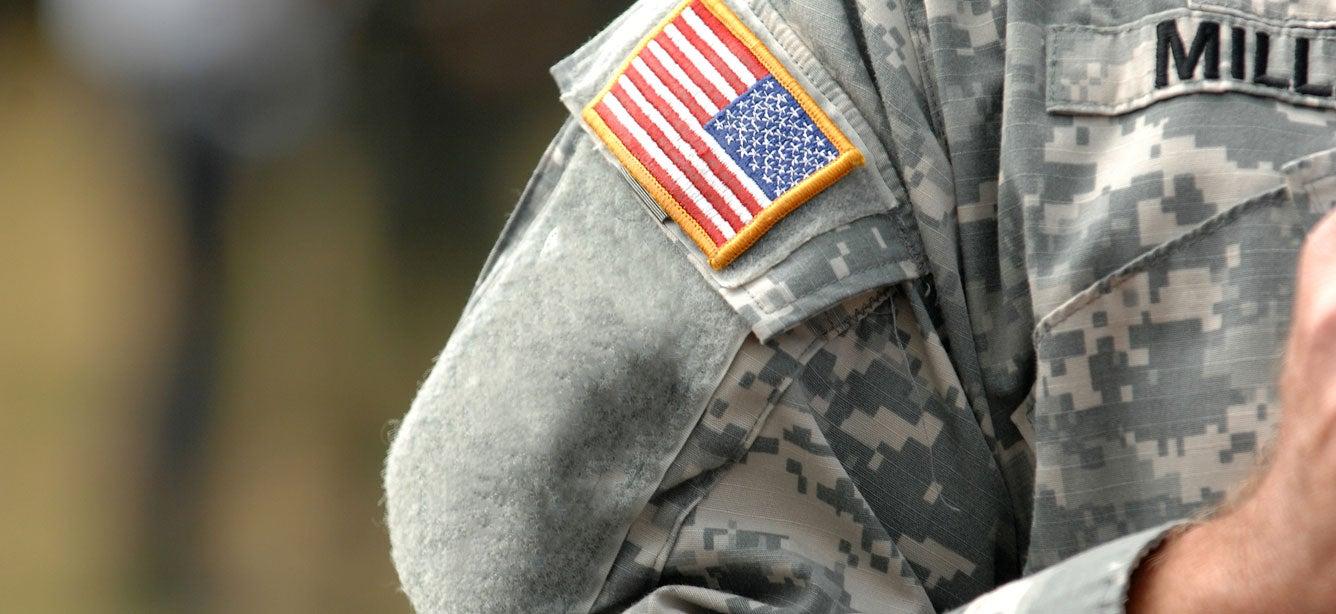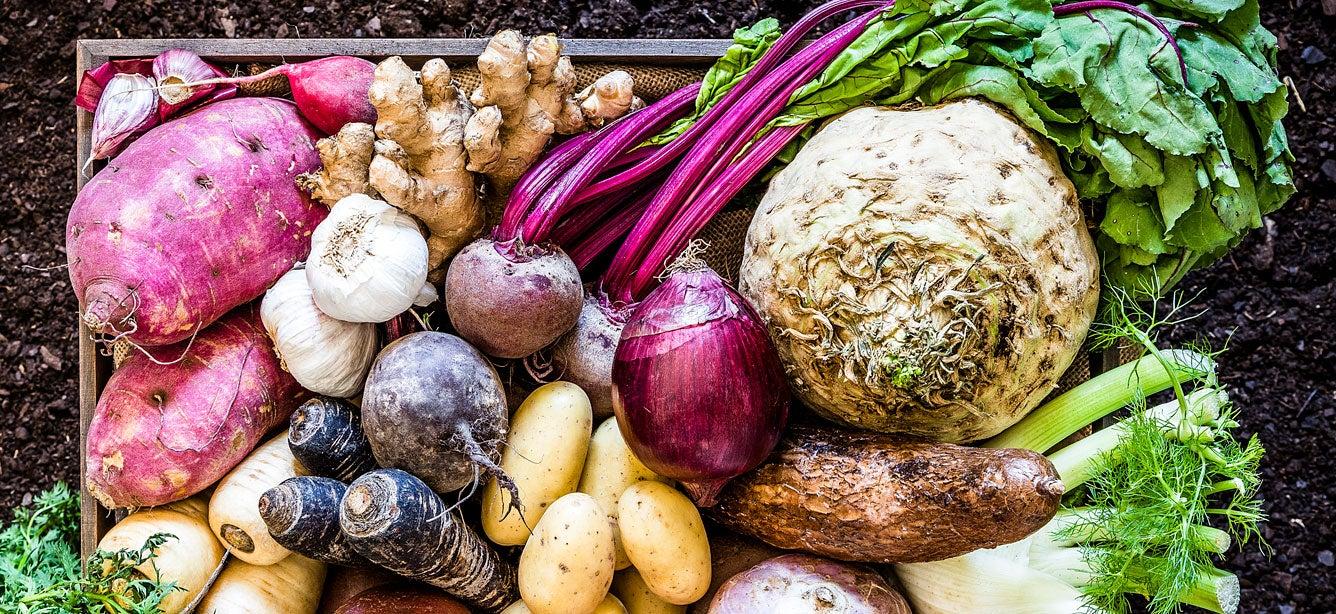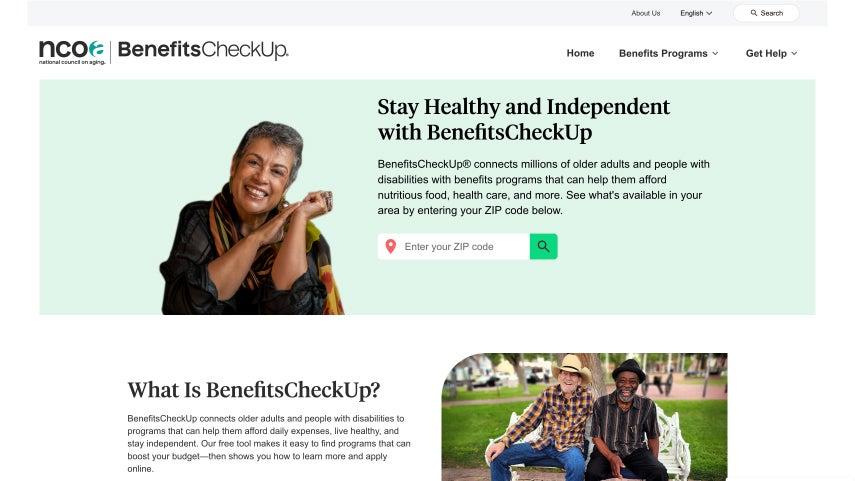
Related Topics
Supplemental Nutrition Assistance Program (SNAP) benefits, once known as food stamps, help millions of American families and adults buy the nutritious food they need to stay healthy on a budget. This includes people who have served our nation in the U.S. military.
Do veterans get SNAP benefits?
About 1.2 million veterans are enrolled in SNAP. Yet according to Jen Teague, NCOA Director for Health Coverage and Benefits, too many veterans who are eligible for the program never claim their benefits. This only adds to the problem of food insecurity, which affects roughly 1 in 5 veterans.1
“Consider that 18 million Americans—6% of the U.S. adult population—are veterans,” Teague said. “Their median age is 65. And post 9/11 veterans experience a 40% chance of having a service-related disability."
“Older adults, and people living with disabilities, often rely on fixed monthly incomes. We know it can be difficult to make ends when you have limited means," she said.
That’s why we encourage veterans to learn more about food assistance programs and to apply for SNAP benefits if they’re eligible. Otherwise, they could be missing out on key financial assistance that would make a real difference in their day-to-day lives,” Teague continued.
How do I know if I qualify for SNAP as a veteran?
You may. To be eligible and apply for SNAP benefits, you must meet specific resource and income limits that are set and managed by the state in which you live. Most SNAP guidelines apply to all households. However, the program also includes special eligibility rules for older adults and people with disabilities, regardless of their age.
This means it’s possible to qualify for and receive SNAP food assistance even if you also collect other benefits such as Social Security Disability Insurance (SSDI) and/or Supplemental Security Income (SSI) payments, or if you live with other people.
Does veteran disability count as income for SNAP?
If you want to apply for SNAP, and you’re a veteran over the age or 60 or live with a disability, your household generally must meet the following two special eligibility requirements:
- Your net monthly income must be equal to or below 100% of the federal poverty line. Any veterans' and disability benefits you receive are counted toward this SNAP income limit.
- Your assets must amount to $4,500 or less in 2025.
Your net income is your gross income minus any allowable deductions. And assets are "countable resources" like cash, money in a bank account, and certain vehicles. In 2025, a two-member household with a net monthly income of $1,704 (100% of poverty) might qualify for SNAP.2
If you’re a combat veteran, it’s important to note that any combat pay, hostile fire pay, or imminent danger pay does not count as income when applying for SNAP.3
There are a variety of allowable deductions, including those for excess medical expenses, that can help you meet the net income test, too. And many assets—such as your home, if you own one—don't count toward the $4,500 limit.
Finally, if you live in a household where every member receives SSI benefits, you may “categorically” qualify for SNAP without having to meet the net income test.
What if I live with my children or other family members? Am I still eligible for SNAP?
You could be. Under the same special eligibility rules, you (and your spouse, if applicable) may qualify as a separate household if you’re over the age of 60 or unable to purchase or prepare your own meals because of a permanent disability.
Together, the remaining members of your household will still need to meet SNAP income limits, defined in this situation as no more than 165% of the federal poverty level.
Why should I take advantage of SNAP food assistance for veterans?
A healthy diet can help combat obesity, diabetes, heart disease, and other chronic conditions that often arise as we age, and that disproportionately affect people living with disabilities. But it can be hard to afford nutritious food if your employment is limited or if you’re on a fixed income. SNAP can help you increase your purchasing power. And there’s no dishonor in claiming benefits that you’ve worked hard to earn.
SNAP benefits can be used for fresh fruits and vegetables, meat and fish, dairy products, non-alcoholic beverages, and other qualifying purchases at participating retailers including supermarkets, convenience stores, and even some farmers markets.
Wondering whether it’s worth it to apply? The average monthly SNAP benefit for a non-elderly, single person with a disability is $188.4 With SNAP, you can take advantage of additional financial assistance that can make a real difference to your health and budget.
Just ask David Z., 75. As a veteran with a disability who relies on SSDI income, he stretches every dollar—but often that’s not enough.
“After I got help applying for SNAP, I was approved for $86 in monthly benefits,” he said. “I have an immense amount of gratitude for the assistance, which helps me cover my utility and other expenses without worry.”
I’m ready. How do I apply for SNAP?
Each state develops its own SNAP application process, so your first step is to check with your local SNAP office. While some states provide online SNAP applications, not all do; you may have to apply by regular mail or over the phone.
Before you begin filling out the forms, you’ll need to have information about your annual net income, household size, and “countable assets” close at hand.
If you’d like someone to guide you through the process, NCOA is here to help. Visit BenefitsCheckUp.org and type in your ZIP code to get started.
What other veterans’ benefits can help you maintain your health, independence, and financial security? Check out NCOA’s handy guide: 18 Benefits for Veterans: Helping Our Nation’s Heroes.
Sources
1. Military Family Advisory Network. Military Food Insecurity Statistics. Found on the internet at https://www.mfan.org/topic/food-insecurity/military-food-insecurity-statistics
2. USDA Food and Nutrition Service. SNAP Eligibility. Found on the internet at https://www.fns.usda.gov/snap/recipient/eligibility
3. USDA Food and Nutrition Service’s “Military and Veteran Families” page. Found on the internet at https://www.fns.usda.gov/military-and-veteran-families
4. USDA. Characteristics of Supplemental Nutrition Assistance Program Households: Fiscal Year 2023. April 2025. Found on the internet at https://fns-prod.azureedge.us/sites/default/files/resource-files/snap-FY23-Characteristics-Report.pdf



